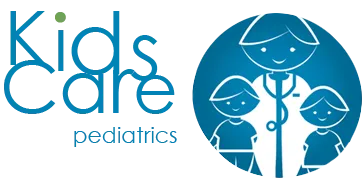Pinworm infection is caused by tiny parasites that can cause unsettling disruptions in the sleep, appetite, and daily routines of your child. Pinworm infections in children are the most common type of intestinal infection in the United States, and are most common in children aged 5 to 10 years. The good news is that pinworm infections are easily treatable, preventable, and rarely dangerous when handled properly.
In this piece, we will explore the causes of pinworms, symptoms, how to check for pinworms, and everything you need to know to treat your kids from pinworms.
Understanding Pinworms in Kids
It’s completely natural for parents to worry about their children, especially when it’s portrayed as an internal infection. Pinworms are tiny, white, roundworm infections known as Enterobiasis Vermicularis. These parasites only affect humans and can live, feed, and reproduce in the human intestine.
They are usually harmless and treatable. Pinworms are often known as threadworms because they look like tiny pieces of white thread.
Female pinworms migrate to one’s anal area at night to lay their eggs, triggering intense itching and irritation in children. Pinworms are visible to the naked eye, usually around half an inch long, and look like short, moving threads. Though unpleasant to think about, they’re one of the most common parasitic infections in children.
How Common are Pinworm Infections in Children?
It’s estimated that up to 50% of children under the age of 10 face pinworm infections. The infection can be easily spread in communal environments like schools and daycare centers. While they don’t have severe consequences, the constant itching at night can result in sleep trouble and behavioural changes.
What are the Causes of Pinworms?
Understanding the cause of pinworms is the first step in preventing them. The eggs of pinworm infection are microscopic and can easily spread from hand to mouth. Common transmission methods include:
- Ingesting pinworm eggs after touching contaminated surfaces like toys, bedding, or toilet seats.
- Fingernail biting or thumb sucking after scratching the anal area.
- Eating food or putting fingers in the mouth without washing hands first.
- Contact with infected individuals or their belongings.
Pinworms are tiny, but are experts at spreading. The eggs can survive on surfaces like bedding, clothing, furniture, and toilet seats for up to two weeks. An individual acquires an infection by ingesting or inhaling pinworm eggs. These microscopic eggs are usually deposited onto a surface by a person with the infection.
Any kid can acquire the infection by ingesting or inhaling pinworm eggs. These microscopic eggs remain in the intestine until they hatch and mature. Adult female pinworms move into the colon and exit the body through the anus at night. Why specifically at night?
There is no particular scientifically backed reason why at night, but that is the cycle of when the worms deposit their eggs. They pick up on some signal that the host is asleep, and proceed to lay the eggs in the folds of skin around the anus. These eggs cause unbearable itching and irritation.
Even a single scratch can spread eggs to a child’s fingers and under their nails. From there, they can be passed along to others through shared items or even just touching shared surfaces. That’s why it’s suggested to keep your kids’ nails trimmed to avoid the chances of getting infected.
Risk factors that increase the likelihood of infection
It’s important for schools to implement strict hygiene protocols and pinworm prevention tips as children are more susceptible to pinworms because of their close interactions and developing hygiene habits. Key risk factors include:
- Age (children under 10 are most at risk).
- Spread of infection at daycare, preschool, or school.
- Having siblings or family members with an infection.
- Inadequate handwashing.
- Living in crowded or shared housing conditions.
Symptoms of Pinworms in Kids
Pinworms may be small, but they can cause severe, noticeable discomfort, mostly at night. Additionally, recognizing the symptoms of pinworms in toddlers can be more challenging because they can’t always describe what they are going through and what’s disturbing them. The symptoms of pinworms in kids include:
- Visible worms
- Itching around the anus, especially at night
- Restless sleep and irritability
- Loss of appetite
- Mild stomach discomfort
- Constant scratching
- Fussiness at night
How to Check for Pinworms at Home
If your kid is getting fussy mostly at night, a simple check at home can often give you the confirmation you need without any major tools. Since pinworms are most active at night, that’s the best time to look for signs. Here are the ways to check for pinworms at home:
The Tape Test Method for Detecting Pinworms
The tape test is the most commonly used method to detect pinworms at home.
- Early in the morning, before bathing or using the bathroom, press a piece of clear adhesive tape against the child’s anal area.
- Carefully place the tape on a plastic bag or a glass slide.
- Repeat this process for three consecutive mornings.
- Take the sample to a pediatrician or diagnostic lab for examination under a microscope.
This test can detect the presence of eggs and confirm the diagnosis. In case you notice persistent itching, behavioral changes, or visible worms, it’s advised to consult your pediatrician immediately to avoid further issues. The doctor will recommend medication for the child and possibly for the entire family, even if others aren’t showing symptoms.
Pinworm Treatment for Kids
Effective pinworm treatment for kids typically involves over-the-counter medicine for pinworms. The medication is often combined with hygiene products and measures to prevent infection. Common medications for pinworms for kids include mebendazole, pyrantel pamoate, and albendazole. Another treatment course for pinworm infection in kids include:
- Home Remedies & Hygiene Practices
- Frequent handwashing to prevent reinfection
- Washing bedding and clothing in hot water
- Keeping fingernails trimmed to prevent egg transmission
- Teaching kids good hygiene habits
- Cleaning and disinfecting home surfaces
- Preventing pinworm spread in schools and daycare
Conclusion
Dealing with pinworm infection in children might feel overwhelming, but it’s highly manageable with the right steps, and Kids Care Pediatrics is here to support you. By spotting symptoms of pinworms in toddlers early, knowing how to check for pinworms, and starting proper pinworm treatment for kids using both medicine and hygiene practices will set your child on the path to recovery, with guidance from Kids Care Pediatrics. With a little vigilance and these helpful pinworm prevention tips, you can stop the itch before it spreads.
FAQs
Q. What’s the best over-the-counter (OTC) medicine for pinworms?
Ans: Pyrantel pamoate is a safe and effective OTC treatment available at most pharmacies. It’s advised to always follow dosage instructions and consult your pediatrician.
Q. Can a child get reinfected after treatment?
Ans: Yes. Reinfection is very common if hygiene measures aren’t maintained. That’s why a second dose and preventive hygiene steps are essential.
Q. Are pinworms only found in kids?
Ans: No, adults can get pinworms, too, especially if they live with infected children. However, symptoms are often milder in adults.
Q. Do pets spread pinworms?
Ans: No, pinworms are a human-only parasite, and pets don’t play a role in transmission.
Q. How long do pinworms live?
Ans: Adult pinworms can live for 4 to 6 weeks, but the eggs can survive on surfaces for up to 3 weeks, making it easy for reinfection to occur if cleaning is neglected.

